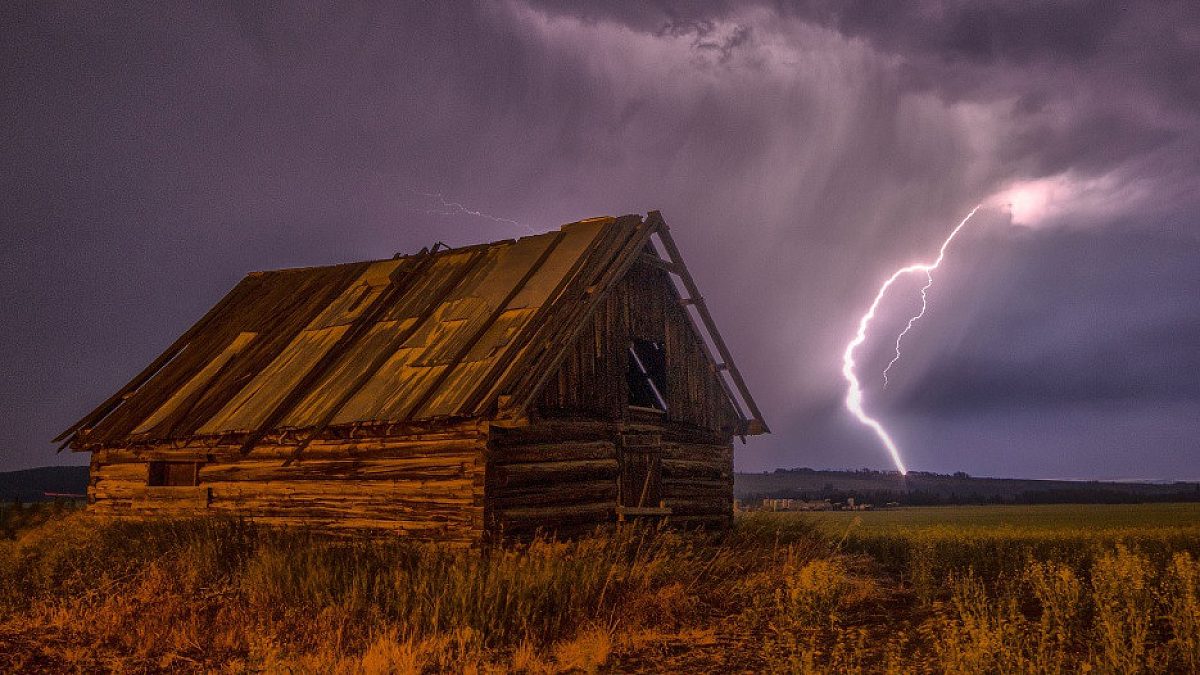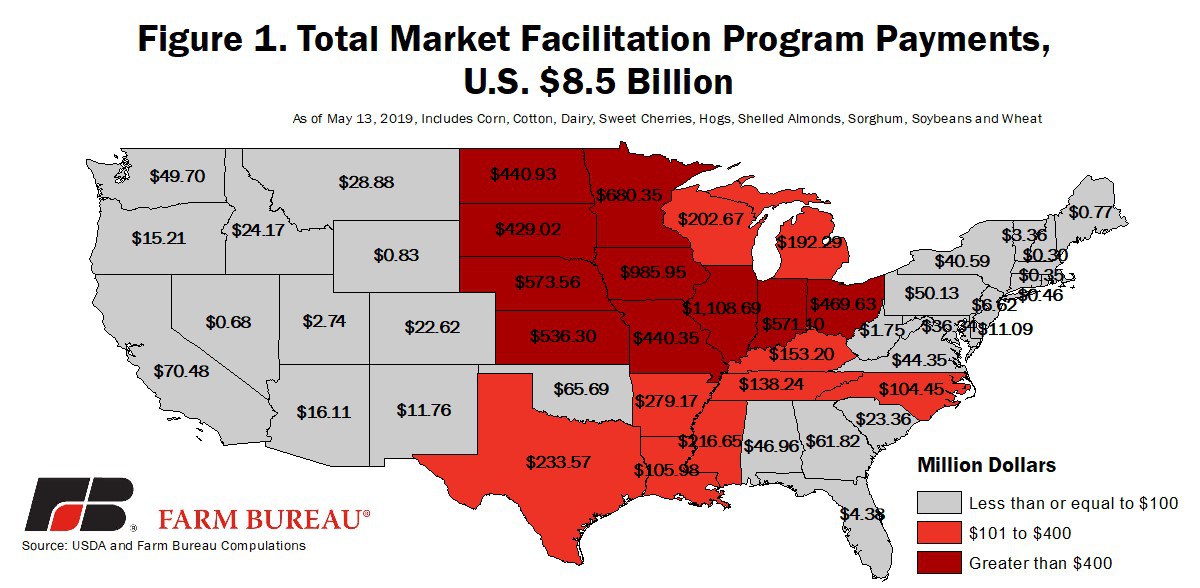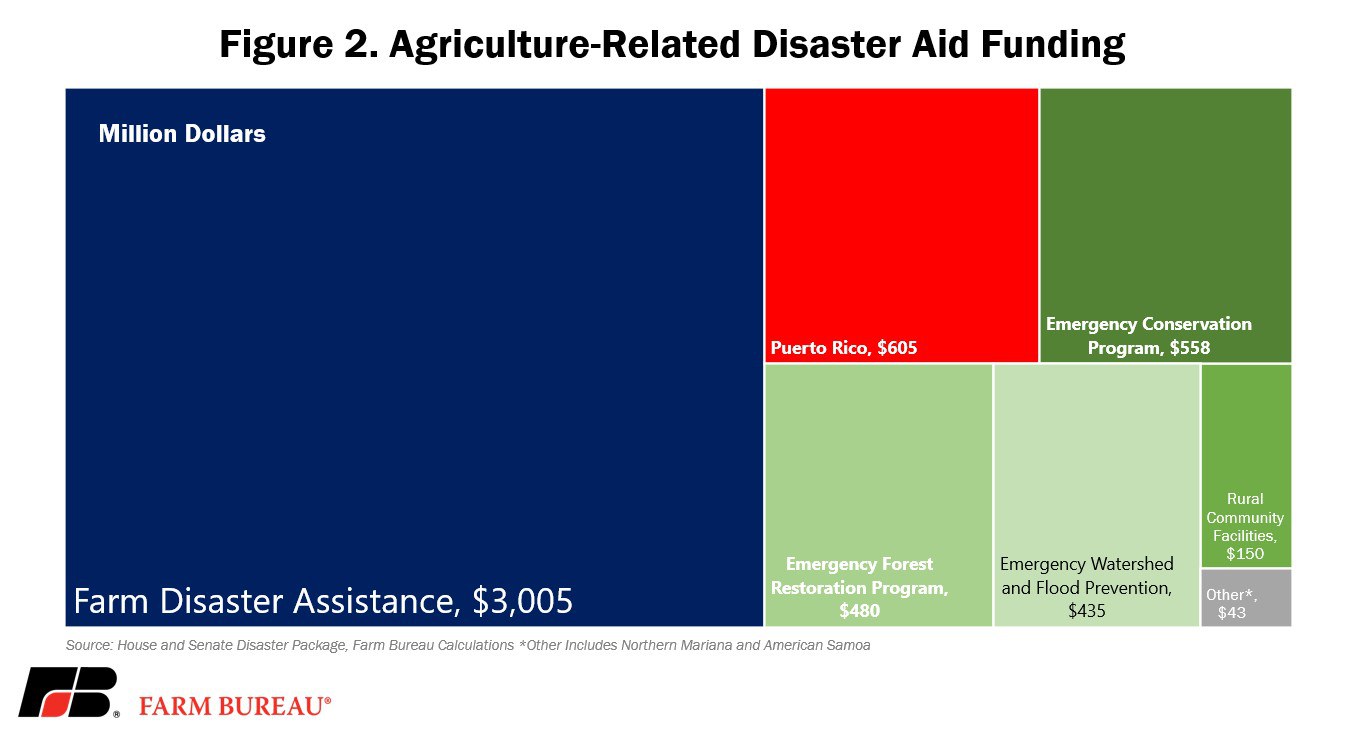What to Expect in the New Disaster Aid Package
TOPICS
Prevent PlantAllison Wilton
Economic Analysis Intern

photo credit: NASA Goddard Space Flight Center / CC BY 2.0
Allison Wilton
Economic Analysis Intern
American producers have been hit hard in the past few years by hurricanes, floods, tornadoes, typhoons, volcanic activity, snowstorms and wildfires. Farmers and ranchers in the South are still recovering from Hurricanes Michael and Florence, while producers in the Midwest are reeling from unprecedented flooding this spring. Several Market Intel articles have reviewed recent disasters as well as the historical delays in planting this year, Farmers Need Disaster Assistance and Crop Planting Delays Reach Historic Levels Resulting in High Levels of Uncertainty for 2019.
On June 3, the House passed a $19.1 billion disaster aid bill, H.R. 2157, that previously passed the Senate with overwhelming support. Now awaiting a presidential signature, this package includes more than $5.2 billion to assist USDA and related programs. The bill also includes funding for nutrition programs in Puerto Rico, American Samoa and the Northern Mariana Islands. Today’s Market Intel highlights the agriculture-related provisions in the disaster aid package.
Farm Disaster Assistance
USDA was allotted $3.005 billion to assist with the loss of crops because of Hurricanes Michael and Florence, as well as other natural disasters occurring in the 2018 and 2019 calendar years. These crops and commodities include milk, on-farm stored commodities, crops prevented from planting in 2019, trees, bushes, vines and harvested adulterated wine grapes. Funding will be available until Dec. 31, 2020. A provision is also included for losses due to Tropical Storm Cindy, as well as losses of peach and blueberry crops from extreme cold and hurricane damage in 2017 and 2018. Orchardists and pecan tree growers may receive payments if their tree mortality rate is over 7.5% and below 15% (adjusted for normal mortality) in calendar year 2018.
Importantly, payments for crop insurance policies under the Federal Crop Insurance Act or the Noninsured Crop Disaster Assistance Program will cover up to 90% of the loss. Crops not covered under these programs can receive up to 70% of the loss. If a crop is offered a revenue insurance policy under the Federal Crop Insurance Corporation, the greater of the projected price or harvest price for that crop will be used to determine the expected value. (Note: There is widespread confusion among growers as to how this provision may relate to crops prevented from being planted, i.e., if prevent planting payments are made on 70% to 90% of the revenue guarantee it could influence planting decisions given the historic delays experienced in both corn and soybean plantings.)
If producers receive these payments, they are required to purchase crop insurance where it is available (under NAP if crop insurance coverage is not available) for the next two available crop years.
Finally, up to $7 million is provided for Whole Farm Revenue Protection indemnity payments that were reduced in 2018. This program provides a safety net for all commodities on a farm under one insurance policy.
Farm Service Agency Emergency Programs
To help owners of non-industrial private forests restore forest health, the Emergency Forest Restoration Program was allotted $480 million. In addition, the measure allocates $558 million for the Emergency Conservation Program, which helps farmers and ranchers recover damaged farmland and install methods for water conservation during a severe drought, and $435 million for Watershed Protection and Flood Prevention Practices to assist with rural watershed recovery.
Rural Development
The bill provides $150 million for Rural Development Community Facilities grants. These grants assist small rural communities in improving and repairing essential public services and facilities. However, these payments will not be applicable if the community is already receiving assistance from the Rural Community Advancement Program via the Rural Development Trust Fund, grants and guaranteed loans.
Market Facilitation Program AGI Waiver
As of May 13, the first round of trade aid provided $8.5 billion in market facilitation program payments to farmers and ranchers, Figure 1. One limiting factor, however, was that trade assistance was capped at $125,000 per operator and farmers with an adjusted gross income above $900,000 were not eligible for trade assistance.

The disaster relief bill amends this provision and waives the eligibility requirement with respect to adjusted gross income. A person or legal entity is now eligible to receive payments under the Market Facilitation Program if the average adjusted gross income exceeds $900,000 and more than 75% of the adjusted gross income comes from farming, ranching or forestry-related activities. Payment remains capped at $125,000 per operator.
Nutrition Assistance
The disaster bill includes provisions for disaster nutrition assistance in the Commonwealth of the Northern Mariana Islands, Puerto Rico and American Samoa. Assistance totals $643.2 million to these U.S. territories in response to major disasters or emergencies designated by the President.
Hemp Crop Insurance
The disaster aid package also included language offering coverage for hemp under the whole farm revenue protection insurance policy starting in the 2020 reinsurance year. The 2018 Farm Bill Provides A Path Forward for Industrial Hemp, but there was uncertainty about when hemp would be eligible for federal crop insurance.
Summary
The recently passed disaster relief bill provides emergency assistance to farmers dealing with the aftermath of natural disasters, as well as farmers impacted by late planting. Most of the agriculture-related funding — slightly more than $3 billion — is for farm disaster assistance related to hurricanes, floods, tornadoes, typhoons, volcanic activity, snowstorms and wildfires. Other funding is allocated for nutrition, conservation, forestry and watershed assistance programs. Figure 2 details the agriculture-related disaster spending by program.

USDA offered the following clarifications on June 11, 2019:
I heard that I could get 90% of my crop insurance guarantee as a prevented planting payment through the disaster bill, is that true?
The Additional Supplemental Appropriations for Disaster Relief Act of 2019 gives the USDA the authority to compensate losses caused by prevented planting in 2019 up to 90%. While the authority exists, USDA must operate within finite appropriations limits. It is highly unlikely that the supplemental appropriation will support that level of coverage in addition to crop insurance. Congress appropriated $3.005 billion in assistance for a wide array of losses resulting from disasters throughout 2018 and 2019, requiring USDA to prioritize how it is allocated. The Department plans to provide assistance on prevented planting losses within the confines of our authority.
I have heard that only acreage in a declared disaster area will qualify for prevented planting under the Disaster Relief Act. Is that true?
USDA is currently evaluating the new authority provided under the Additional Supplemental Appropriations for Disaster Relief Act of 2019. However, it is generally true that producers with qualifying losses in a Secretarial or Presidentially-declared disaster area will be eligible for Disaster Relief Act assistance. Producers with qualifying losses outside of those areas will have eligibility determined on a case-by-case basis.
If I am prevented from planting but manage to get a cover crop or a forage in the ground, am I able to hay or graze that prior to November 1, given the forage shortage we’re going to experience?
USDA encourages you to visit with your crop insurance agent to ensure you are aware of those various prevented planting, cover crop, and harvest options for your operation. USDA is currently reviewing the prevented planting restrictions in the Federal Crop Insurance Act to determine what options may be available to address this and other issues. Further clarity regarding this haying and grazing date will be forthcoming.
What if I don’t have crop insurance? How do MFP and disaster relief programs work for me if I’m prevented from planting due to natural disasters?
Crop insurance is not required to qualify for 2019 MFP assistance. However, USDA requires that a producer plant a 2019 MFP-eligible crop to qualify for the 2019 MFP assistance.
If you choose to plant a cover crop with the potential to be harvested, because of this year’s adverse weather conditions, you may qualify for a minimal amount of 2019 MFP assistance.
The Additional Supplemental Appropriations for Disaster Relief Act of 2019 gives the USDA the authority to compensate losses caused by prevented planting in 2019. Producers with qualifying losses in a Secretarial or Presidentially-declared disaster area will be eligible for Disaster Relief Act assistance. Producers with qualifying losses outside of those areas will have eligibility determined on a case-by-case basis.
